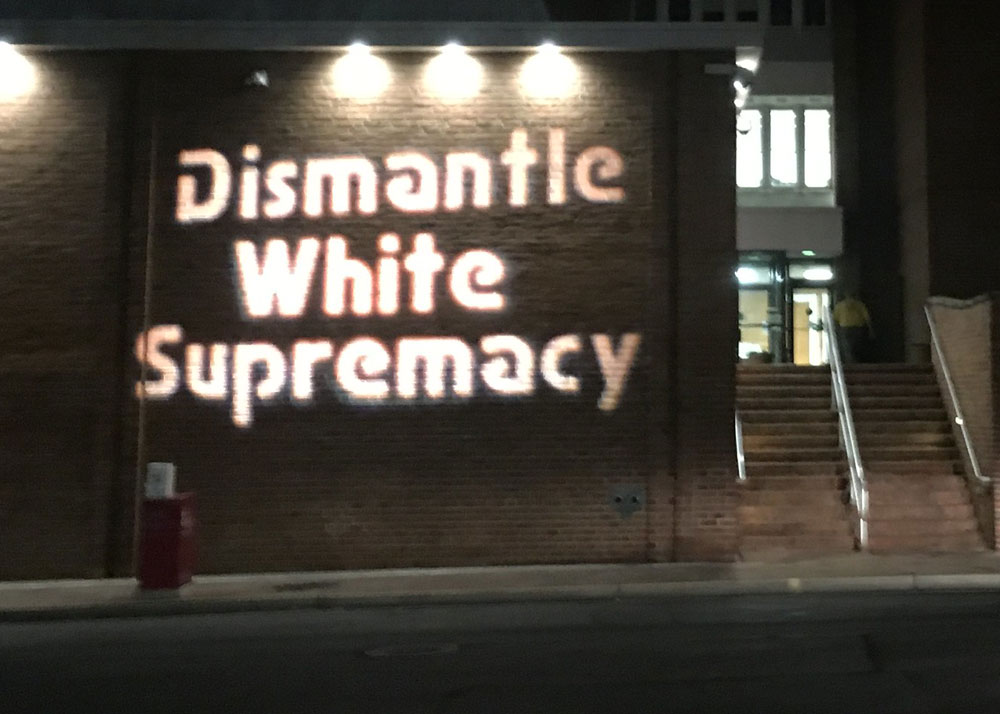
July 4, 2019; Dallas Observer and the Washington Post
White supremacists have stepped up their efforts to spread their message and find new supporters on college campuses across the nation. That’s the takeaway from a recent study conducted for the Anti-Defamation League. As their presence increases, so does the need for the college administrators to find a way to separate permissible protected speech and the values of academic freedom from behavior that must be banned and barred.
Supremacist groups like Identity Evropa, Patriot Front, and the Daily Stormer Book Club often begin with overtures and assertions that they wish to “Reclaim America” and “Keep America American.” When their message becomes clear, it shifts to direct attacks against Jews, black people, Muslims, non-white immigrants, and those under the LGBTQ umbrella. Often using low-cost and low-tech approaches, groups poster, sticker, and leaflet campuses to spread the message of white supremacy and attract students to their cause.
According to the Washington Post, the ADL “found 292 occurrences on campuses located in the District [of Columbia] and 47 states, a 77 percent increase, compared with the 2016–2017 school year.” From the perspective of ADL’s national director, Jonathan Greenblatt, the growing presence of these groups must be fought.
Campuses and their communities should be places for learning, growing and the future, not close-minded racism and hate-filled rhetoric from the past. We’re concerned to see that white supremacists are accelerating their efforts to target schools with propaganda in hopes of recruiting young people to support their bigoted worldview.
Sign up for our free newsletters
Subscribe to NPQ's newsletters to have our top stories delivered directly to your inbox.
By signing up, you agree to our privacy policy and terms of use, and to receive messages from NPQ and our partners.
As reported by NPR, University of Utah president Ruth V. Watkins spoke for many when she released a statement following a hate-speech incident on her campus saying, “From the perspective of college leaders, the messages of these groups are hate-filled and unacceptable. These cowardly, faceless, and non-university-sanctioned tactics are designed to disrupt and frighten individuals and communities, and to garner attention for an insidious ideology that has no place on our campus or in our community.”
But keeping these groups and their messages out isn’t so easy. From the perspective of Joanne Woodard, the University of North Texas’s vice president for institutional equity and diversity, handing out flyers is not an activity that can be barred, even if they contain these messages.
As a public university, UNT doesn’t restrict white supremacist groups or any other outside organizations from handing out leaflets on campus, said. The university can restrict the time, place, and manner those groups do their recruiting. The university also has requirements about where on campus flyers can be posted.
Free speech advocates strongly underscore the need to protect free speech even when the message is despicable. Supporters of academic freedom want colleges and universities to be places where all viewpoints can receive open, unrestricted consideration.
Focusing on combatting the rise of white supremacist activity by barring them from campuses or other public spaces may miss the mark. Trying to define the limits of speech is neither easy nor error-proof. Taken too far, it weakens democracy and can harm the very people its current advocates seek to protect. More critical may be an understanding of why white supremacy’s message has growing currency and acceptability—and, with that understanding, designing a better way to respond than just trying to silence the messenger, a goal that may not be feasible in our high-tech world.—Martin Levine













